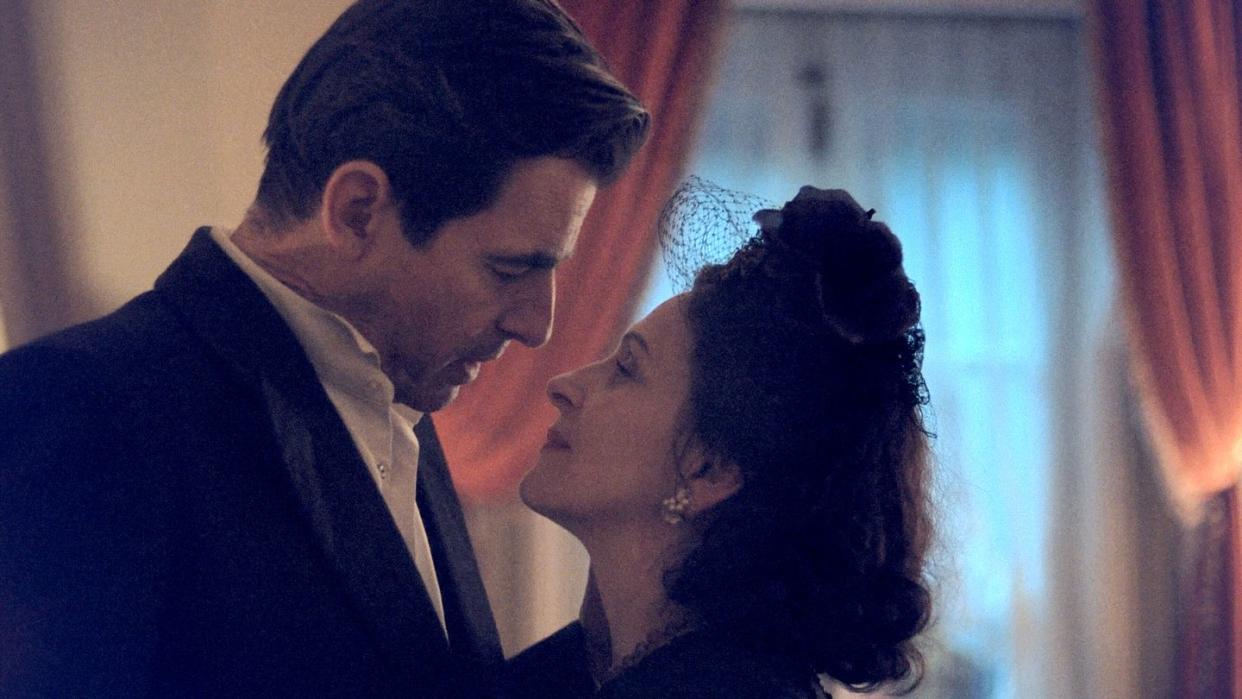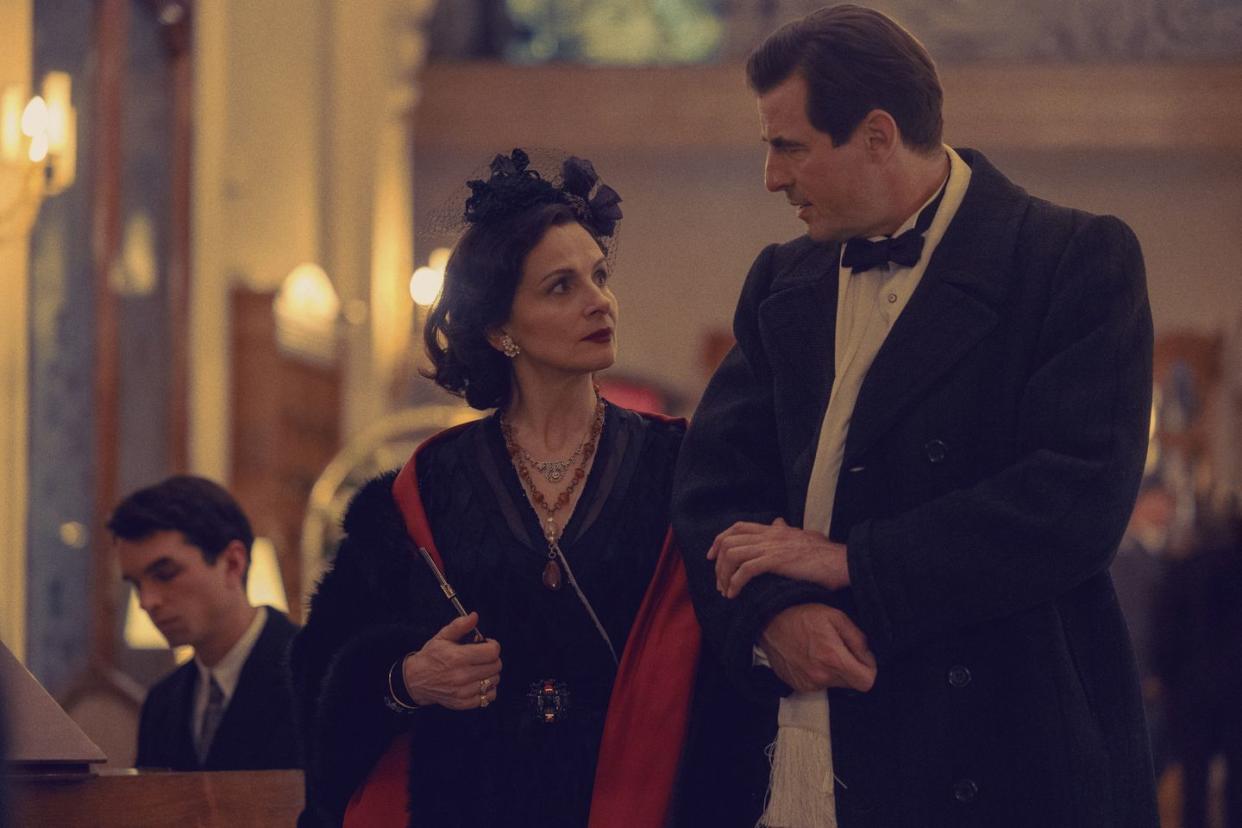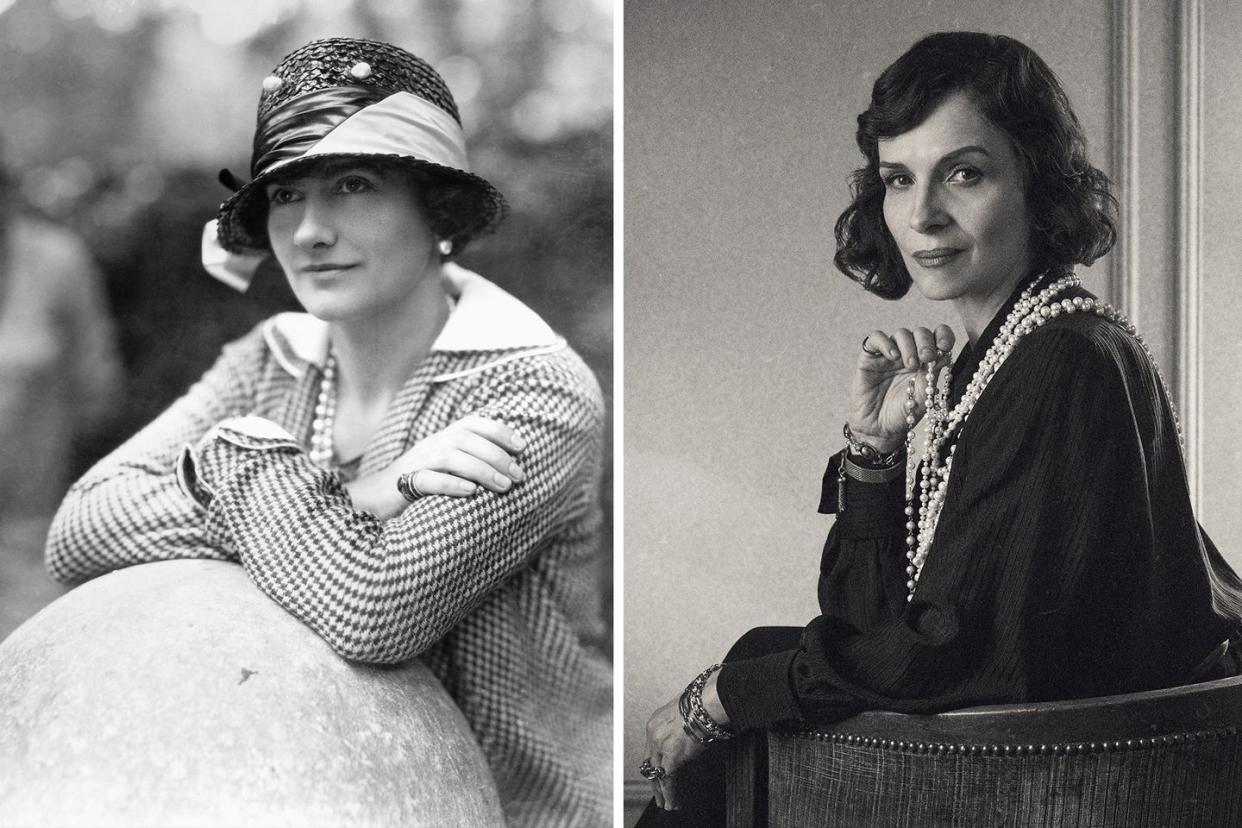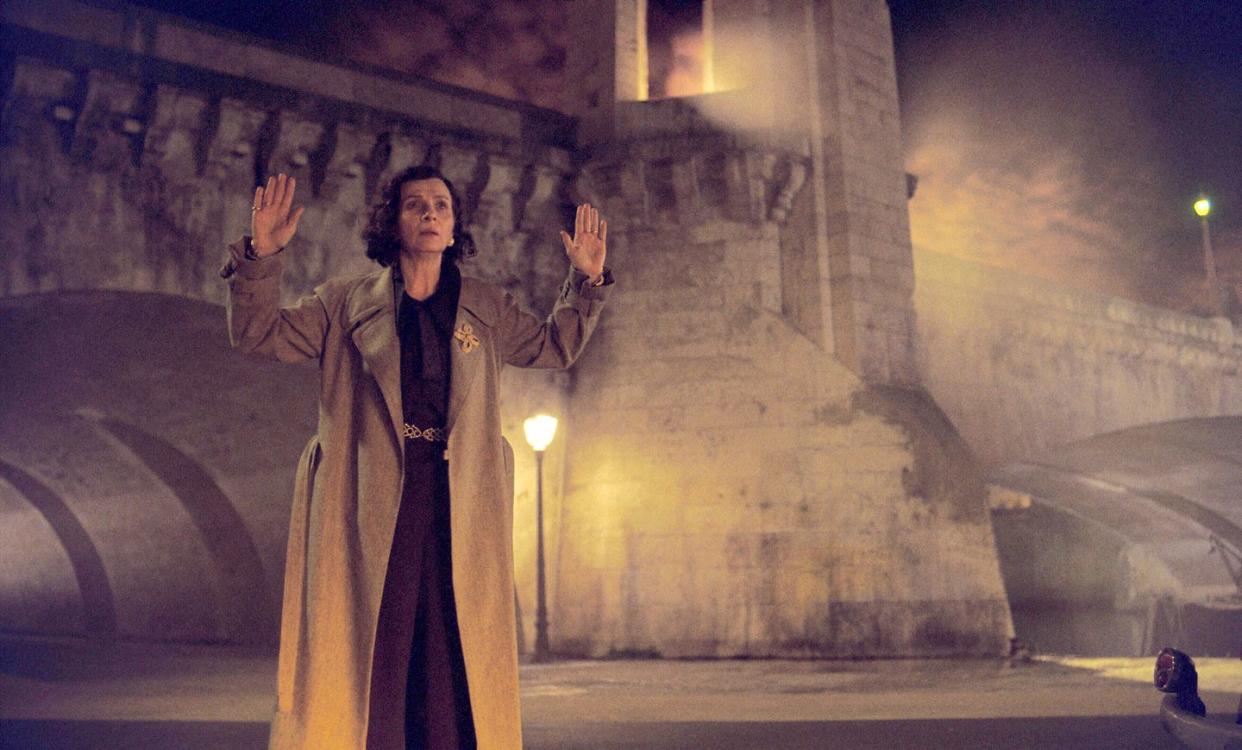How 'The New Look' Addresses Coco Chanel's Complicated History

"Hearst Magazines and Yahoo may earn commission or revenue on some items through these links."
During World War II, French fashion designers responded dramatically differently to the Nazi occupation of Paris. The New Look, a television show from Apple TV+ that premeired this week, details the responses to Vichy France from prominent designers—most notably Coco Chanel (played Juliette Binoche) and Christian Dior (Ben Mendelsohn).
The 1940s, series creator Todd A. Kessler tells Town & Country, "was a time frame that stuck with me, that all of these designers—Dior, Balenciaga, Chanel, Balmain, Givenchy, Pierre Cardin were all contemporaries, all lived through the Nazi occupation of Paris. They're all survivors, but what they did to survive the Nazi occupation of Paris [differed]—and then the backdrop is the world of their artistry and fashion."

As the drama depicts, at the start of World War II, Chanel (played by Binoche), began an affair with Nazi officer Hans Günther Von Dincklage, also called Spatz (played by Claes Bang), and carried out a mission on behalf of the Nazis. This is true to history. In real life, Dincklage was, in fact, a Gestapo spy, and Chanel did work with the Nazis. Under the occupation, Chanel lived at the Ritz Hotel in Paris, where the Germans used as headquarters. She was sent on a mission to Madrid to try and contact her old friend, Prime Minister Winston Churchill, but whatever happened on that mission was lost to history.
As Hal Vaughn, the author of Sleeping with the Enemy: Coco Chanel's Secret War, said in an interview back in 2011, "Madame Gabrielle Labrunie—Chanel's grand-niece—said something to me that I found fascinating. She said to me: 'You know, Mr. Vaughan, these were very difficult times, and people had to do very terrible things to get along.'" After his book came out, Chanel (the fashion house) denied Vaughn's allegations that the designer was antisemitic, but said in a statement, "What's certain is that she had a relationship with a German aristocrat during the War. Clearly it wasn't the best period to have a love story with a German even if Baron von Dincklage was English by his mother and she [Chanel] knew him before the War."

The New Look doesn't ignore these parts of her history during World War II, and paints a nuanced, complex portrait of Chanel and her decision to collaborate with Nazis. The period drama is rooted in fact, Kessler says, and they tried to do "as much exhaustive research as we possibly could."
From there, he says, the question became: "What is the sense that we have of these people going through extraordinary circumstances with no road map to success? Success being survival—not financial success, but success being able to live. That was our starting place, and then trying to have compassion for them as people, looking at them as their goal is to survive. And not approach it with judgment, but approach it with, in essence, 'what would I have done?' There but for the grace of God go I... what would I have done if I was in that situation? And then to understand the choices that they made."
Lorenzo di Bonaventura, The New Look's executive producer, adds, "This is the fourth piece of entertainment that I've worked on that deals with real people in their real lives. If you don't do that kind of research, the inauthenticity of it shines through. It just does."

In one scene near the end of the first episode, Spatz brings Chanel to an apartment that belonged to a Jewish family. "Mademoiselle," he tells her, "you may make a list, and any items that you like will be yours." She responds, "I don't need anything." He continues, "Whatever you see that you desire, I will have it delivered to your suite at the Ritz. It's a new world—it's time you embrace it."
For Kessler, this scene was key to understand Chanel's decisions to ally with Nazis during the war. "That's a moment that's based on historical research: Chanel was offered that choice," he says. "And that she took something. In that moment, she is deciding for herself, 'what am I supposed to do here? I don't need any of this stuff.' She was very wealthy. It's not that she needed any of it, but there's a test going on. [It epitomizes] the randomness of the whole experience of living under the Nazi occupation, how life could be extinguished so quickly and for no apparent reason. The experience of storytellers is to say, 'if you put yourself in that situation, what choice would you make that you're being tested?' There is no right decision. The right decision will only be revealed afterwards, that you survived. That was very alive for us in the storytelling."
Di Bonaventura adds, "On the surface of it, you go, 'oh my God, she took something,' right? It's like, wait a second. You really don't—I didn't, anyway, in first learning of this—really think about what she's thinking at that moment. Is she just thinking selfishly, or is she thinking, 'oh my God, these people are really dangerous that I'm around with?' She is an incredibly smart woman—she's got to be aware of both those things. That's one of the reasons why, going back to authenticity, if we didn't get into this with her, it would not be authentic."
The first three episodes of The New Look are now streaming on Apple TV+. Watch now
You Might Also Like
